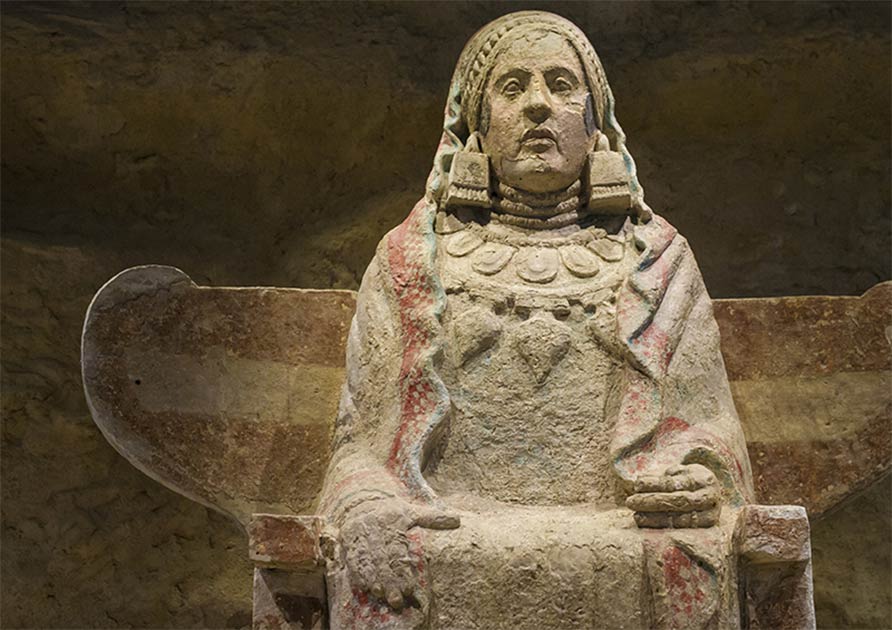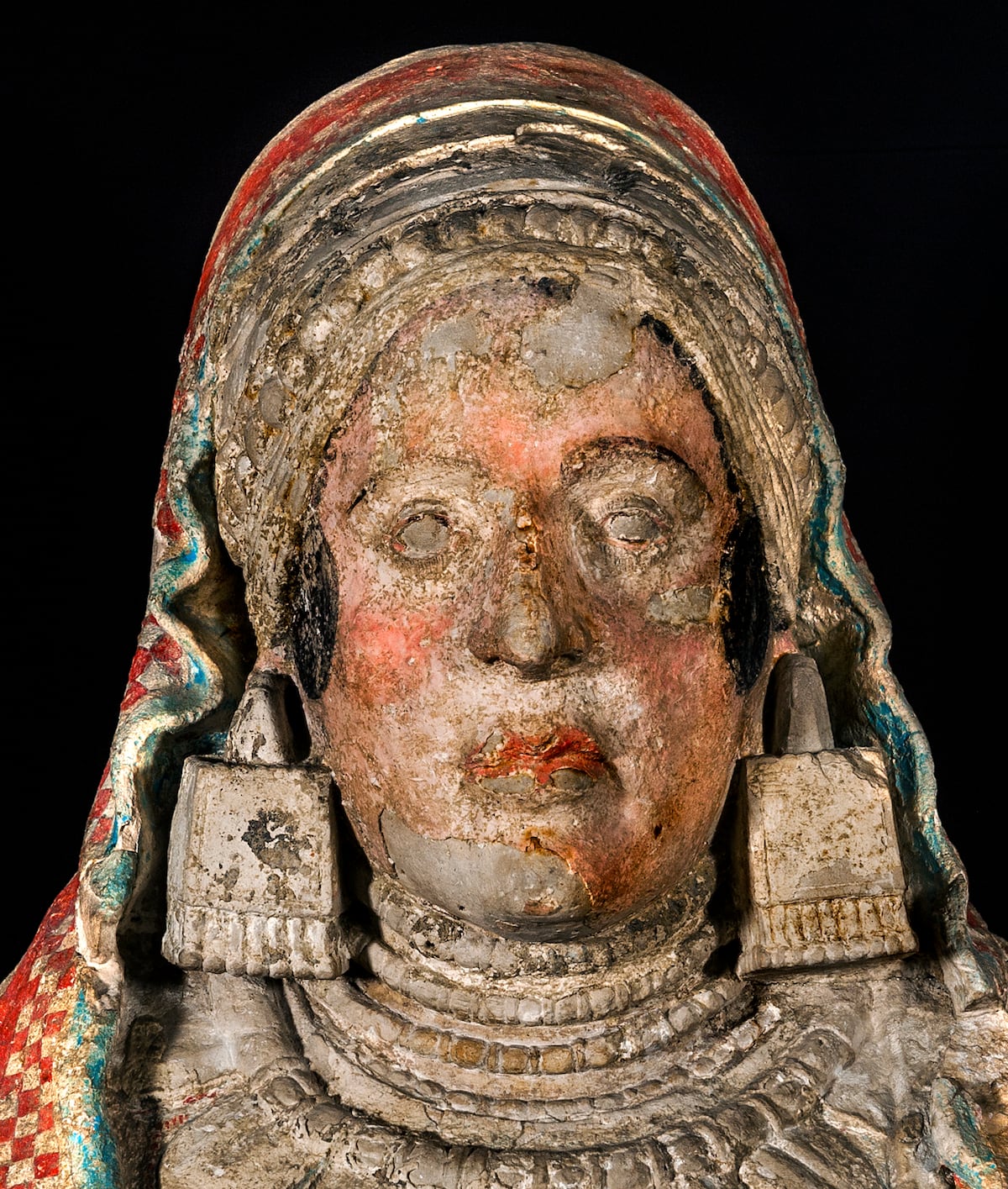The Lady of Baza, discovered in 1971 in the ancient Baza necropolis near Granada, Spain, is one of the most remarkable artifacts of Iberian art. Dating back to the 4th century BC, the statue offers a rare and fascinating glimpse into the cultural and artistic practices of the ancient Bastetani people, a Celtiberian tribe whose capital was nearby. The Lady of Baza stands as a testament to the sophistication of Iberian craftsmanship and religious symbolism, as well as the complexity of their burial practices.
A Regal and Symbolic Representation
The statue portrays a seated woman, exuding an air of regal authority, with her hands resting on her knees. She is adorned with a lavish headdress, large earrings, and intricate clothing details, all suggesting her elevated status. These elements mirror the style and iconography of other important Iberian figures, such as the Lady of Elche, which is why the Lady of Baza has been closely associated with religious and cultural rites tied to leadership or divinity. The presence of Egyptian blue and vermilion in the pigments used to decorate the statue is an extraordinary discovery, as it not only reveals the vibrancy of Iberian art but also points to possible cross-cultural influences between the Iberians and the wider Mediterranean world, including Egypt. These bright colors—once prominently visible on the statue—bring to light the rich aesthetic and symbolic traditions of the time.

A Funerary Connection: Symbolism and Burial Practices
One of the most intriguing aspects of the Lady of Baza is its potential role in funerary rituals. Experts believe the statue may have served as a funerary urn, likely containing cremated remains, with an opening at the back that suggests this function. This connection to death and the afterlife positions the statue within the broader context of Iberian burial practices, where objects of personal significance were often included in graves to accompany the deceased into the next life. The symbolic details—such as knots in the figure’s clothing that may have represented personal protection—also hint at the spiritual beliefs of the Iberians, suggesting that this artifact may not only have been a depiction of a high-status individual but also an important religious icon.

Preservation and Insights into Iberian Society
Recent conservation efforts, including the use of modern photographic techniques, have allowed for a more detailed understanding of the statue’s features. The Lady of Baza’s realistic facial features and the intricate designs of her clothing have been brought into sharper focus, offering further insights into the artistry and fashion of the time. These findings enrich our understanding of Iberian culture and provide valuable context for interpreting the broader Iberian archaeological record.

The Legacy of the Lady of Baza
Today, the Lady of Baza is housed in the National Archaeological Museum of Madrid, where it is displayed alongside other iconic Iberian artifacts such as the Lady of Elche and the Lady of Ibiza. The statue serves not only as a key piece of Iberian art but also as a window into the spiritual and cultural practices of the ancient Iberian peoples. As one of the most significant finds in Iberian archaeology, the Lady of Baza continues to captivate researchers and visitors alike, offering a tangible connection to the distant past.
The statue’s detailed craftsmanship and symbolic depth allow it to stand as a symbol of the ancient Iberian world, illustrating their rich artistic traditions and belief systems. The Lady of Baza is more than just a funerary statue; it is a timeless representation of the sophistication and complexity of a long-lost civilization.

